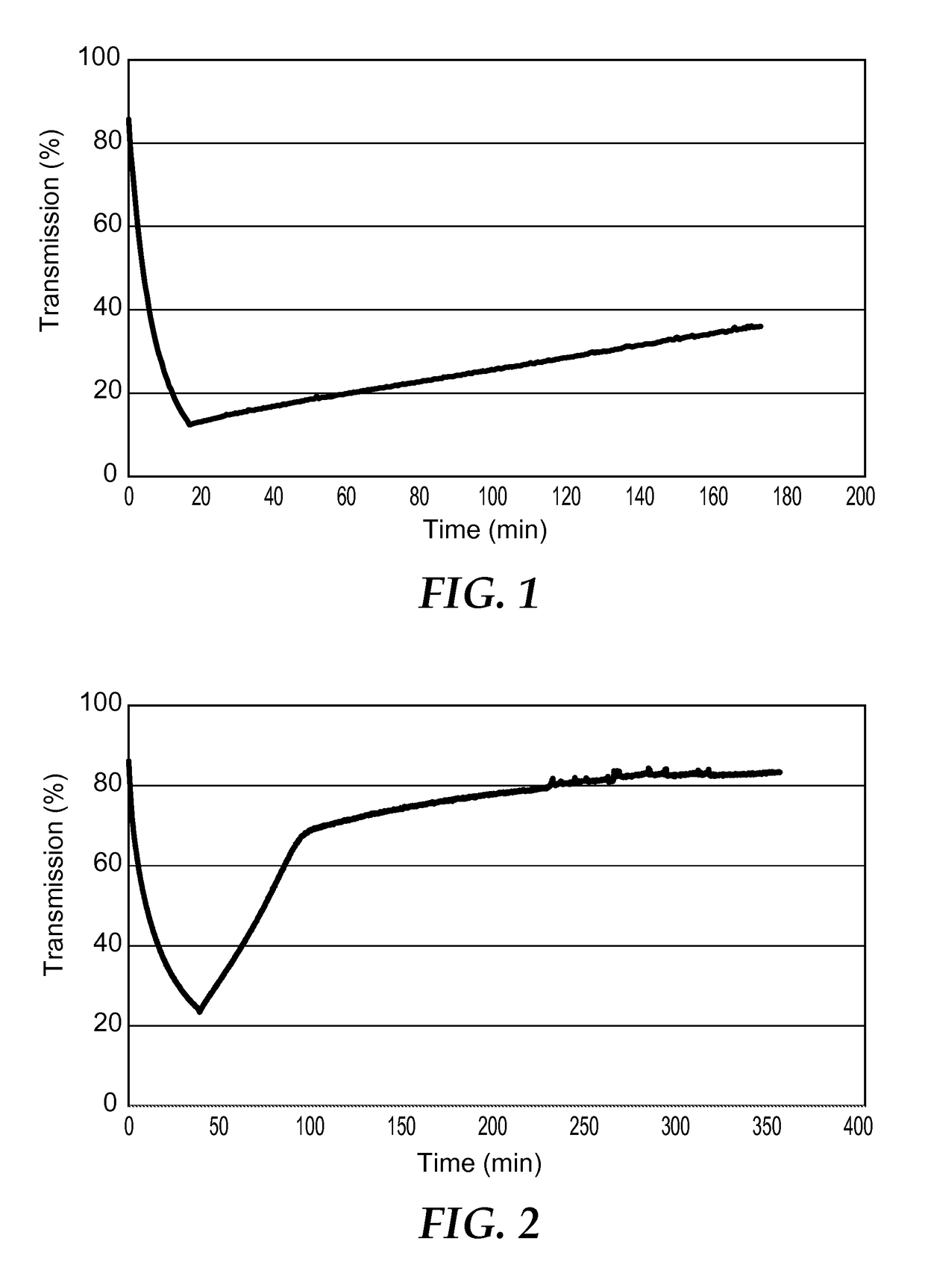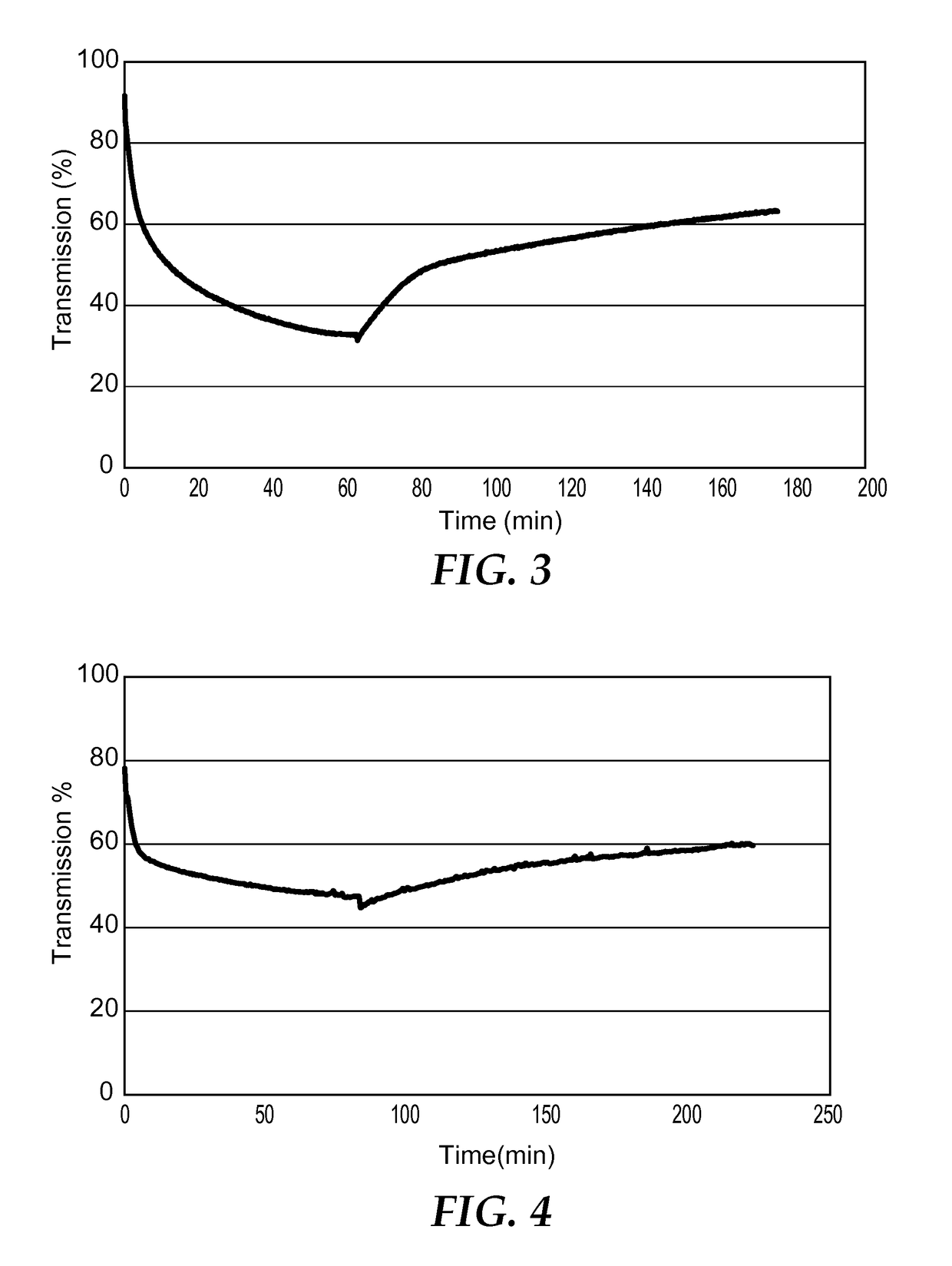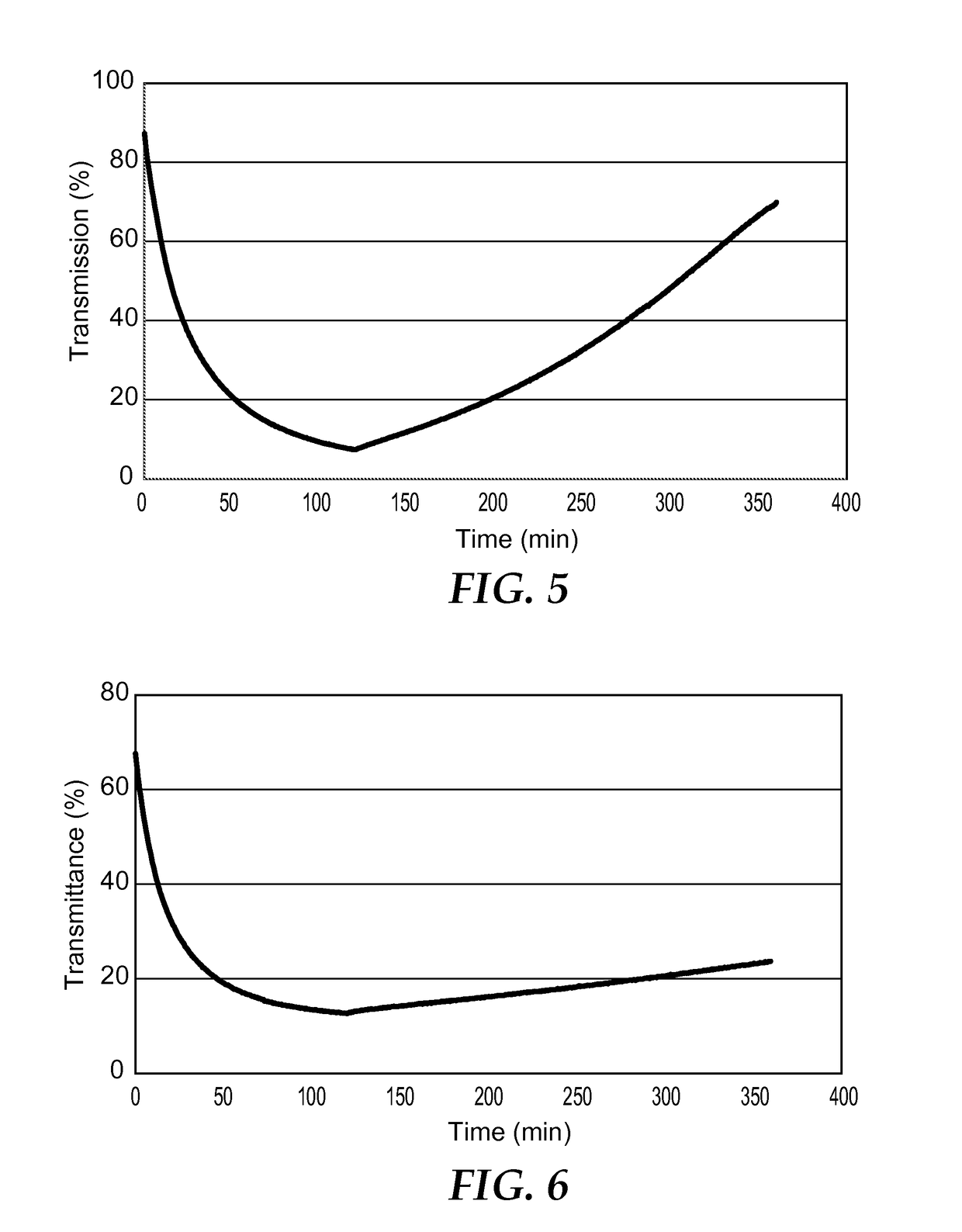Photochromic articles containing a polyoxometalate and methods of making same
a technology of photochromic articles and polyoxometalates, applied in the direction of tenebresent compositions, chemistry apparatus and processes, etc., can solve the problems of typical known materials that do not compare well with desired traits, technology entering the vehicles, windows and structural glass markets, and fatigue, etc., to achieve the effect of reducing the degradation of polymers
- Summary
- Abstract
- Description
- Claims
- Application Information
AI Technical Summary
Benefits of technology
Problems solved by technology
Method used
Image
Examples
example 1 (ex-1)
[0245]A dozen 20 mL screw-top vials were loaded with 12-tungstophosphoric acid (H3[PW12O40].12 H2O) (1.00 g, 0.32 mmol) and magnetic stir bars and the acid was dissolved in distilled water (10 mL). To each of these vials was added 3 equivalents (0.97 mmol) of one of the following organic bases: aniline (0.09 mL), benzylamine (0.1 mL), dimethylamine (0.12 mL), N-dimethylaminopyridine (DMAP, 118 mg), diisopropylamine (0.14 mL), guanidine hydrochloride (92 mg), imidazole (66 mg), 1-methylguanidine hydrochloride (106 mg), dihydrochloride piperazine (154 mg), pyridine (0.08 mL), quinoline (0.11 mL), and morpholine (0.08 mL). Upon addition of each base a precipitate formed. In some cases, stirring was not adequate to dissolve the organic bases with low water solubility (e.g. aniline, quinoline) so these samples were sonicated in an ultrasonic bath. The resulting salts were collected by vacuum filtration, washed with water (5 mL), and dried in a vacuum oven at 60° C. for 16 hours. Solid sa...
example 2 (ex-2)
[0246]Polymethylmethacrylate (PMMA, 1.0 g) was dissolved in acetonitrile (5 mL) in two 20 mL screw-top vials with magnetic stirring at a slightly elevated temperature. To each vial was added 0.1 g of the following heteropoly tungstates: 12-tungstosilicic acid (H4[SiW12O40].6 H2O) and 1-methylguanidinium 12-tungstophosphate ((C2H8N3)3[PW12O40].0.3 H2O), such that the polyoxometalate and counter cation complex was in 10 wt. % concentration relative to the PMMA. The solutions were stirred to give homogenous mixtures and these solutions were cast into 2.5 cm glass rings on a PTFE film. The films were allowed to dry at room temperature overnight and were further dried in a vacuum oven at 60° C. for several hours. Using this technique to solvent cast films from PMMA gave films with many bubbles and holes caused by evaporation of the solvent. However, some qualitative data could be gathered by irradiation of the films and observing the resulting photochromic properties. The 1-methylguanidi...
example 3 (ex-3)
[0247]In a 20 mL vial 1-methylguanidinium 12-tungstophosphate ((C2H8N3)3[PW12O40].0.3 H2O) (0.85 g, 0.274 mmol) was dissolved in methyl ethyl ketone (MEK, 5 mL) by stirring for 30 minutes. To this mixture poly(methylmethacrylate-n-butylmethacrylate) (2.0 g) was added such that the polyoxometalate and counter cation complex was 30 wt. % of the total solids and this solution was stirred for 24 hours. The solution was degassed via an ultrasonic bath for 30 minutes and dropped into a glass mold on a PTFE substrate. The sample was then dried for 1 day in an oven at 60° C. Upon drying the clear solution gave a hazy film that measured 0.28 mm in thickness. The sample exhibited a 10% decrease in transmission when irradiated for 2.5 hours via a 15 W mercury lamp emitting 5.43 mJ / cm2 of radiation at 365 nm. The sample was then left in darkness and returned to its original state after several hours in the air at room temperature.
PUM
| Property | Measurement | Unit |
|---|---|---|
| photochromic | aaaaa | aaaaa |
| composition | aaaaa | aaaaa |
| weight | aaaaa | aaaaa |
Abstract
Description
Claims
Application Information
 Login to View More
Login to View More - R&D
- Intellectual Property
- Life Sciences
- Materials
- Tech Scout
- Unparalleled Data Quality
- Higher Quality Content
- 60% Fewer Hallucinations
Browse by: Latest US Patents, China's latest patents, Technical Efficacy Thesaurus, Application Domain, Technology Topic, Popular Technical Reports.
© 2025 PatSnap. All rights reserved.Legal|Privacy policy|Modern Slavery Act Transparency Statement|Sitemap|About US| Contact US: help@patsnap.com



